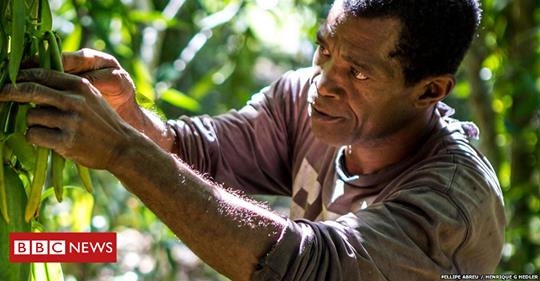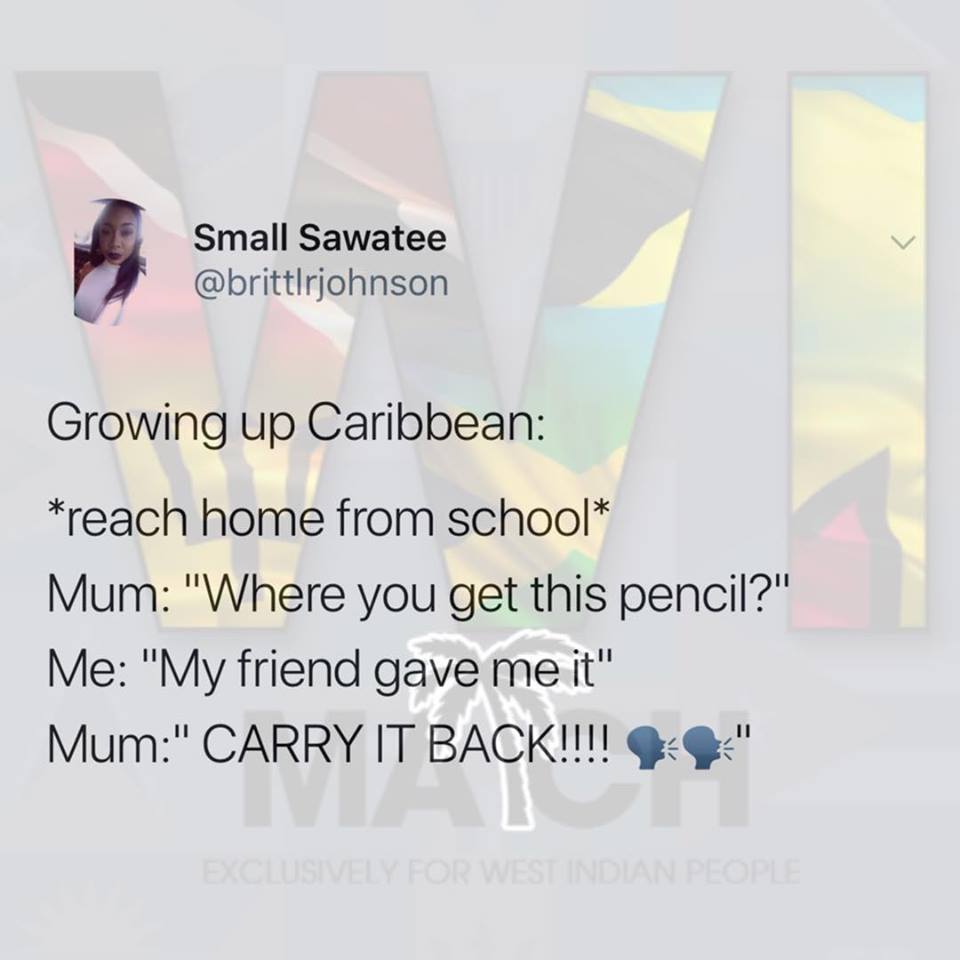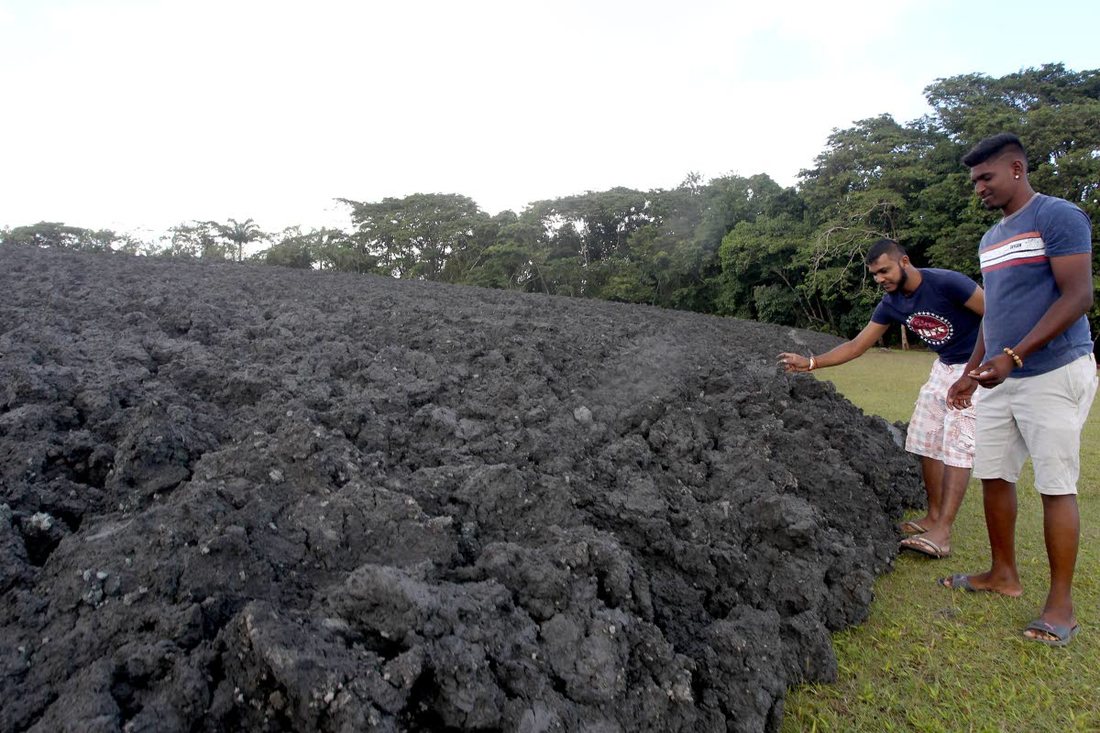|
A barefoot farmer is making his way through a forest.
Quiet drops of rain tumble steadily through the night, picked out in the light from his torch. The rusty machete he holds isn’t for cutting down vines or chopping away stubborn branches - it is a defence against thieves. Lots of other men - farmers like him - are out in the rain, patrolling the forest. For the past three months, they have left their homes every night and made the long journey into the plantations to protect their crop. But this is not an illegal coca plantation, or anything like it. In fact, these farmers are growing a crop whose name is a byword for something boring. The men need weapons to guard against robbers who roam the countryside looking for one thing - Madagascan vanilla. The robberies are often violent. There have been dozens of murders in Madagascar linked to vanilla. Several communities have tried and failed to get protection from armed police. Some have taken the law into their own hands. Villagers say in a nearby village, a machete-wielding crowd descended on five suspected gangsters - hacking and stabbing them to death. The killings have yet to be solved by the police. Locals say there is no will or capacity in the police forces to investigate the vanilla thefts - or the mob justice that sometimes follows. The chief of Leon’s village fears the same thing could happen there. A youngish-looking man, Chief Oreis is wearing shorts and sandals with a bright purple shirt when he stops by Leon’s house to say hello. His expression grows stern when he talks about the vanilla thefts. “We have to do our best to make sure thieves are not able to steal from us here,” he says. “Because if someone’s livelihood is taken away, they can do anything, even kill.” Thousands of miles away in London, Oddono’s ice cream shop is tucked between a pizza parlour and a cafe on a busy street in South Kensington. There’s a plethora of awards on one wall. The owners boast of the finest natural ingredients in their authentic Italian gelato: Valrhona chocolate from France, pistachios from Sicily, hazelnuts from Piedmont. But last year, one variety of ice cream was missing. “When I told customers that we didn’t have any vanilla ice cream, many of them were shocked,” says Christian Oddono, who manages the shop. “I had to explain that we didn’t want to give them bad quality products but also we were never going to use chemicals. Then, they understood.” The price for last year’s Madagascan vanilla crop was sky high, but Christian found the quality of what he was getting so low that he took vanilla ice cream off his menu. “The pods had too much moisture in them and some even had a mouldy smell - a sign that the curing process wasn’t done properly,” he says. “This year I found another, better supplier in Madagascar. The prices are still high, so we’ve had to raise our prices as well, but our customers haven’t complained. We see a general trend of more customers wanting to eat more authentic food and shying away from chemicals and lab-produced substitutes.” We are used to seeing vanilla all around us - in candles, cupcakes and creme brulees. But if you’re eating something vanilla-flavoured or smelling something vanilla-scented - it’s probably artificial. Scientists have been making synthetic vanillin - the compound that gives vanilla its aroma - since the 19th Century. It has been extracted from coal, tar, rice bran, wood pulp and even cow dung. Today, the vast majority of synthetic vanillin comes from petrochemicals. It can be 20 times cheaper than the real thing. The burgeoning interest in “artisanal” food made in a traditional way explains some of the demand for natural vanilla. But much of the rocketing price can be put down to food rules on both sides of the Atlantic. In Europe and the United States, ice cream labelled “vanilla” must contain natural vanillin extract from vanilla pods. If the flavour comes wholly or partly from artificial sources, the packaging must say “vanilla flavour” or “artificial vanilla”. Vanilla from vanilla pods will have a taste and potency unique to the area in which it is grown, much like wine. The vanilla from Madagascar has a distinct rummy taste and sweet aroma, which is why ice-cream makers choose it over vanilla from other countries. And there is more and more pressure on food companies to switch from artificial vanilla to vanilla beans. Big corporations such as Hershey and Nestle have started buying natural vanilla extract for their products in large quantities, which injects more demand into the limited supply chain and raises prices further. Over the past decade, vanilla prices have gone through dramatic booms and busts. Madagascar’s 80,000 growers produce more vanilla than any other country - so what happens on the island affects the global industry. In March 2017, cyclone Enawo struck the island and destroyed much of that year's crop. Two of the largest vanilla-producing regions were hit directly. Small growers have since struggled to match demand as it takes three to four years for a new plant to produce vanilla pods. Prices have rocketed. Five years ago, the price of 1kg (2lb 3oz) of vanilla was $20 (£15). In 2018, it briefly became more expensive than silver, reaching a peak of $600 a kilo, before a modest decline to $515 in June. The still-green beans start to ferment quickly, so buyers must be found fast. Small farmers typically sell green pods to middlemen who gather large amounts to sell on to local exporters. At this point, the pods do not have the characteristic vanilla smell or taste. The laborious journey - from pollination to curing and drying, and then preparing for export - takes about a year. The finished product is a brownish-black, heavily wrinkled vanilla bean that is soft, supple and leathery to the touch, with a strong aroma. The process can be used by speculators to preserve pods that have been harvested too early. They often store them to sell later at higher prices. But immature or improperly cured beans have a lower vanillin content and often a mouldy taste. Many farmers choose to pick their pods early themselves to avoid losing everything to thieves in the last months before the harvest. The government has tried to stop this by setting fixed harvest dates for each village. To hammer the message home, the authorities recently burned 500kg of prematurely picked pods in public. But there are smaller middlemen who are under immense pressure to get their beans early - and at a lower price. They get cash advances from big exporters - but they must deliver. Waiting until harvest time, when demand exceeds supply, can be risky. Arman Ramarokootonirina has been working as a middleman buying up vanilla from farmers in Maroantsetra for more than seven years. There are many unscrupulous new entrants into the industry, he says. It is now flush with cash. “It is the greed of the big bosses that is causing the problem. People get big advances yet they haven’t even planted any vanilla. Then they have to steal it from other people’s gardens to fulfill the orders.” But for the growers who are able to protect their crops, the high vanilla prices mean one good harvest can be life-changing. A kilogram of cured beans is worth $400-$500 - a hefty sum in a country where the average annual per capita income is $1,500. The grandest building in Maroantsetra is the headquarters of one of these exporters. Painted pristine white with dark green trim, it’s a striking contrast to the wooden houses on either side. Up to four tonnes of vanilla are exported from here every year. Security cameras line the path to the large warehouse at the back of the complex. There are big padlocks on the gates and iron bars criss-cross the windows. Sylvan Chen runs the place. They pat down the staff at the end of each day to make sure no vanilla is being smuggled out in bags, shoes or underwear. It’s not vanilla season yet, so the women on the lower floor of the warehouse now are sifting cloves - another spice exported from Madagascar, nowhere near as lucrative as vanilla. The upper floor is where the vanilla will be stored while it’s being dried. The space is packed to the rafters with cheap foam mattresses. Sylvan sold 2,000 of them last year to farmers, who prefer them to sleeping on traditional woven mats. They’re often handing back the cash Sylvan has just given them for their vanilla. Times are good for the industry, now that the price of vanilla is so high, Sylvan acknowledges. But there is a fear that short-term gains will cause long-term damage to the quality and reputation of Madagascan vanilla. “Madagascar’s vanilla is too expensive and people could turn to other countries which are equipped with quality standards. The vanilla sector here may no longer have a future if the quality doesn’t improve”. Trees and forest that are cut down cannot grow back the same way again - it would take hundreds of years. When this sort of damage occurs, a fragile ecosystem is disrupted. Lemurs will no longer have food here. Plants, insects and animals that relied on a delicate balance start to disappear. People in Madagascar are worried about its vanilla losing its reputation - but in the national park a fragile ecosystem is being badly damaged to cater for global demand. It is short-sightedness. World Premiere of the story of a young man from Trinidad whose life’s journey gave him a place on the world stage. The highly anticipated World Premiere and Official Launch of Frances-Anne Solomon’s feature film, “Hero: Inspired by The Extraordinary Life and Times of Mr. Ulric Cross,” will be as the Opening Film at Trinidad and Tobago’s prestigious Film Festival, on September 18, 2018 at NAPA, in Port of Spain, Trinidad.
Republic Bank is the Title Sponsor for HERO — a Tall Caribbean Tale about a young man from Trinidad who, in 1941, leaves home to enlist in World War Two. Miraculously, he survives the bloody carnage to become the RAF’s most decorated West Indian. Then his life takes another surprising turn and he finds himself at the centre of a remarkable historical moment. Cross’ long life spanned key events of the 20th century and included the independence struggles of Africa and the Caribbean. The international cast includes top screen stars from the Caribbean, the UK, Ghana and Canada including Trinidad’s Nickolai Salcedo in the lead role of Ulric Cross; Canada’s Peter Williams (Stargate-SG1); the UK’s Joseph Marcell, (Fresh Prince of Belair), Jimmy Akingbola (In The Long Run), Pippa Nixon (Panic), Fraser James (Resident Evil) and Eric Kofi Abrefa (Julie); Ghanaian superstars John Dumelo and Adjetey Anang; and featuring cameos by well-known East Enders star Rudolph Walker and Nollywood star O.C. Ukeje. Following the screening in Trinidad, Director Frances-Anne Solomon, Executive Producer Lisa Wickham and Nickolai Salcedo will be among those in attendance. Ulric Cross (1917-2013) was a Trinidadian war hero, broadcaster, lawyer, judge and diplomat. “The film draws on events in Ulric‘s life to recount a hitherto untold story of those Caribbean professionals who helped to liberate Africa from colonialism. Not only is the story inspired by his life, it recreates the dynamic and transformative times in which he lived. Because of Ulric’s significance as a diplomat and high-level government advisor during often turbulent times in post-independent Africa, many details of the role he played in these African countries had to be kept confidential — and this remains so today. Thus, several events have been extrapolated and dramatized,” said Frances-Anne Solomon, the film’s Director and Producer. “Ultimately, the story is about us, about who we are as Caribbean people, and as citizens of the world,” The 100-minute feature film combines archive of the time with dramatizations inspired by events in Ulric Cross’ life, and was filmed over three years on location in Ghana, Great Britain and Canada, as well as in Trinidad & Tobago. Sponsors and Partners supporting the film include Presenting Sponsor, Republic Bank, in association with Telefilm Canada, CaribbeanTales Worldwide Distribution, and Imagine Media International. Source: Caribbean Posh, August 2018 "This is what I grew up with, and what I’m trying to do is share what my mom cooked — it's a tribute to her," Gouvia says. "It's simple things, simple food and I want to share that food with everyone."
He also notes that the flavors of Trinidad are influenced by a range of cuisines from the island's colonizers like the French, Spanish, Dutch, and English. Even Chinese populations made their way through the Caribbean and left their prints on some of the recipes. So while you might know Jamaican callaloo, you might not know the soupier Trinidadian style that Gouvia prepares. Some of the menu items on Norma G's menu aren't totally unfamiliar to Detroit. Callalloo, chicken pelau, jerk chicken, curry goat — these are plates you'll find in some of the city's other Caribbean eateries. Still, what Norma G's owner/chef Lester Gouvia is doing and preparing is something new in Detroit. Though he's billing his Jefferson-Chalmers eatery — which hosts a soft opening on Thursday — as a Caribbean restaurant, Gouvia was born in Trinidad, and he's offering "Caribbean" dishes as they're prepared there, rather than in Jamaica, for example. "There are similarities in the names [of Caribbean dishes], but not necessarily the taste," Gouvia tells Metro Times. Even more specifically, he describes his dishes as comfort food like those recipes that his mom — Norma G — prepared in her kitchen when Gouvia was a boy. His chicken pelau is a jumble of rice, chicken, house seasoning, squash, pigeon peas, and peppers that Gouvia "bakes to a golden brown." Jerk chicken gets the comfort food treatment in the jerk chicken pasta, in which the bird and peppers are mixed in a sauce of cream and blended cheeses. Oxtail sliders or jerk chicken sliders can be paired with mac and cheese or Trinidadian potato salad. Norma's also offers a list of four vegan options, including melongene -- diced eggplant and sweet onion sautéed in a homemade marinara sauce and served with jasmine rice. Among the appetizers are codfish balls made with dried codfish that's sautéed with herbs, vegetables, house seasoning, and mashed potatoes. It's blended together into a ball, fried, and served with a garlic or chipotle or garlic horseradish mayo. Doubles are "classic Trinidadian street food" with chick peas sautéed in house spices with onions that's all served between housemade fried dough. It's accompanied by a tamarind sauce and mango chutney. Norma G's offers a full bar along with a selection of pops and a sorrel beverage along with coffee and tea. Desserts are made with Wally's frozen custard, and includes the Trini Trifecta with vanilla frozen custard, Trinidadian rum and cinnamon. The other thing that sets Norma's apart is the vibe. It's a sit-down restaurant, and it's casual and colorful, but also tasteful. There really isn't much like it in Detroit. "What was in my head was the bright colors — when you think of the Caribbean, you think of bright colors and Carnival, and that's reflected in here without being crazy," Gouvia says. "There are no seashells or palm trees ... you can do things tastefully and be colorful and it doesn’t have to be cheesy."Gouvia was born in Trinidad but moved to Brooklyn as a young boy. A job in the financial industry led him to metro Detroit where he only intended to stay a few years, but he loved the area and never left. Jefferson-Chalmers appealed to him more than downtown, Midtown, or other neighborhoods because he feels that Norma's will have a greater impact there. Gouvia worked with SWOT City to pull together funding for the roughly $450,000 project from a variety of sources, including a $60,000 Motor City Match Grant. He's leasing the building from Jefferson East, Inc. Norma G’s is located at 14628 E. Jefferson Ave. in Detroit. Source: Detroit Metro Times, August 2018  CALYPSO Queen of the World Calypso Rose (McCartha Linda Sandy-Lewis) was specially invited by the Mustique Company to perform at its 50th anniversary party at Basil’s Bar last month. Rose’s manager Jean Michel Gibert who attended the party said it was quite an experience. He said Rose went to the popular Basil’s Bar with her full band and gave a concert performance that had approximately 200 guests from around the world – but mostly British – dancing throughout her performance. Gibert said, “It was a vibrant private party that had fireworks!” Among the guests were Prince William and Katherine, the Duke and Duchess of Cambridge, and close to the stage were Mick Jagger and his daughter Jade, who invited Rose to her shop in Mustique. Jagger’s granddaughter was also on stage with Rose. “The show was extremely well received, as Rose told guests short back-stories on the songs she sang which they related to. Songs like Abatina, No Madame, Calypso Queen and Back to Africa. Then towards the end of her performance, everybody came on stage with Rose as she ended with Fire Fire and Tempo. She was very happy with that. It was a good promotion for TT and Rose,” Gibert said. As a lagniappe, he said, Rose gave guests an unplugged version of Rivers of Babylon, which they sang along to. Bar owner Basil Charles attended William and Kate’s wedding in 2011 as a guest of Princess Margaret, and has since became the couple’s personal friend. The Mustique Company, which owns the island in the Grenadines, was featured together with Calypso Rose and the royal couple in the British celebrity magazine Hello on August 13. The story spoke of Kate’s paradise party during her tropical island date with William, cocktails and calypso in the Caribbean. It said William and Kate joined locals and holidaymakers at the famous bar for the 50th-anniversary celebrations of the Mustique Company, the consortium of residents that runs the island, where the dress code for the party was “a splash of gold.” “The royal couple opted for an ‘island chic’ look, with Kate wearing white while William sported a shirt from the local brand Pink House Mustique. They were there for the cocktails segment and kept it rather classy,” a source told Hello. Rose’s band comprises a number of Caribbean musicians including Corey Atheleny Wallace (TT/UK) on bass; Gregory Louis (Guadeloupe/France), drums; Fabien Kioka (Martinique), horn; and Audrey Rose Gbaguidi (Grenada/France) on vocals, as well as Silvain Barvieu, horn; Patrick Goraguer, keyboard; Cali Kamga (Africa/France), vocals; and Jean Mba (Africa/France), guitar. Also providing entertainment were the Rolling Stones’ touring keyboard player Matt Clifford and his band. Source: Newsday, August 2018 Read the full article here
THE Devil's Woodyard mud volcano erupted this afternoon almost at the same time a 6.9 magnitude earthquake shook TT, Venezuela, Grenada, St Lucia, St Vincent and Guyana.
Councillor from the Princes Town Regional Corporation for Hindustan/St Mary's, Michelle Benjamin, told Newsday that residents reported hearing a loud sound coming from the volcano at the same time the first tremors from the earthquake began. Benjamin said residents fled their homes, seeking open ground, and saw the volcano spewing mud several feet in the air. She said no one had reported any structural damage to their homes and there were no reports of further cracking of the earth around the volcano. In a 47-second clip posted to social media, residents are heard exclaiming over the sound the volcano made while erupting. In the video, gas can be seen shooting up. Source: Newsday, Aug 2018 |
T&T news blogThe intent of this blog is to bring some news from home and other fun items. If you enjoy what you read, please leave us a comment.. Archives
May 2025
Categories
All
|








 RSS Feed
RSS Feed